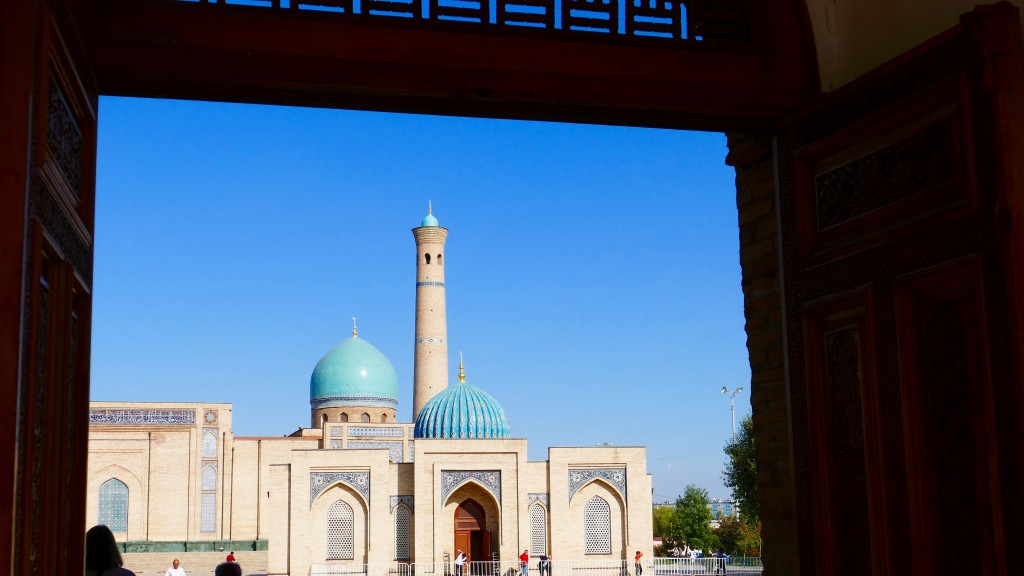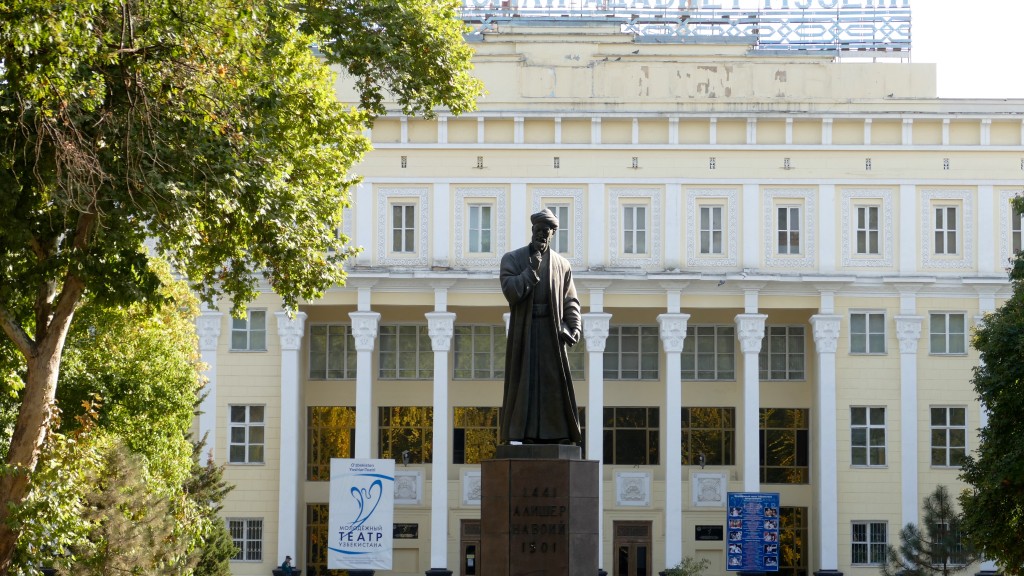
Museum of Memory of Victims of Repression in Tashkent, which is located near the Tashkent TV tower, is opened in 2002. The aim of the museum is to reveal the persecution and repression of Uzbek people during the Soviet times and before.
751 nahmen arabische Streitkräfte Taschkent ein und trafen auf die westlichen Vorposten der Chinesen. Damit stieß die arabische Expansion einstweilen an ihre Grenzen. Gleichzeitig breitete sich in dem Gebiet der Islam aus. Im 9. und 10. Jahrhundert fiel Taschkent an den Staat der Samaniden. In dieser Zeit waren die beiden islamischen Gelehrten al-Haitham ibn Kulaib asch-Schāschī (gest. 946) und Abū Bakr al-Qaffāl asch-Schāschī (gest. 976) hier tätig. Im 11. Jahrhundert wurde Taschkent zum ersten Mal als Stadt genannt.
1220 eroberte Dschingis Khan die Stadt und gliederte sie in sein Reich ein. Im 14. Jahrhundert kam Taschkent unter dem Krieger Timur Lenk und den Timuridenerneut zu Reichtum. Später war Taschkent zwischen bucharischen, usbekischen und kasachisten Khanaten umstritten.

Tashkent
1839 versuchte der russische Zar Nikolaus I. die Expansion der Briten in dem Gebiet zu verhindern. 1865 wurde Taschkent von russischen Streitkräften erobert und 1867 zum Zentrum des Generalgouvernements Turkestan gemacht.
wurde zur Taschkent am 18. April 1918 Hauptstadt der Autonomen Sozialistischen Sowjetrepublik Turkestan innerhalb Russlands ausgerufen. Bei der Aufteilung der ASSR Turkestan im Jahre 1924 wurde Taschkent Hauptstadt der am 27. Oktober 1924 neu gegründeten Usbekischen SSR innerhalb der Sowjetunion. Das unmittelbare nördliche Hinterland der Stadt kam jedoch zur Kasachischen SSR, sodass die Stadt zur Grenzstadt wurde.

The monument was built in 1976 to the 10-th anniversary of the terrible earthquake that destroyed almost half of the city. The earthquake of 1966 was 9 point on the Richter scale, the zone of destruction was 10 square kilometers. Exact numbers are unknown, but it is known that after the earthquake more than a quarter of million people become homeless
Taschkent war für die Sowjetarmee während des Sowjetisch-Afghanischen Kriegesder wichtigste Stützpunkt außerhalb Afghanistans. Die 40. Armee wurde 1979 mit Hauptquartier in Taschkent nach 34 Jahren neu aufgestellt, sie sollte die Grenzen zu Afghanistan sichern. Der Großteil der in Afghanistan verwundeten Soldaten wurde nach der Erstversorgung in eines der Krankenhäuser der Stadt gebracht..
Am 31. August 1991 wurde in Taschkent die Unabhängigkeit Usbekistans ausgerufen und Taschkent zur Hauptstadt des neuen Staates. Seither wird die Stadt renoviert und umgebaut, um das Bild eines mächtigen Regierungszentrums für einen modernen unabhängigen Staat zu schaffen.
Quelle: Wikipedia




Museum of Memory of Victims of Repression in Tashkent, which is located near the Tashkent TV tower, is opened in 2002. The aim of the museum is to reveal the persecution and repression of Uzbek people during the Soviet times and before.

Tashkent

Tashkent

Tashkent



Tashkent
















Bitte hinterlasse eine Antwort